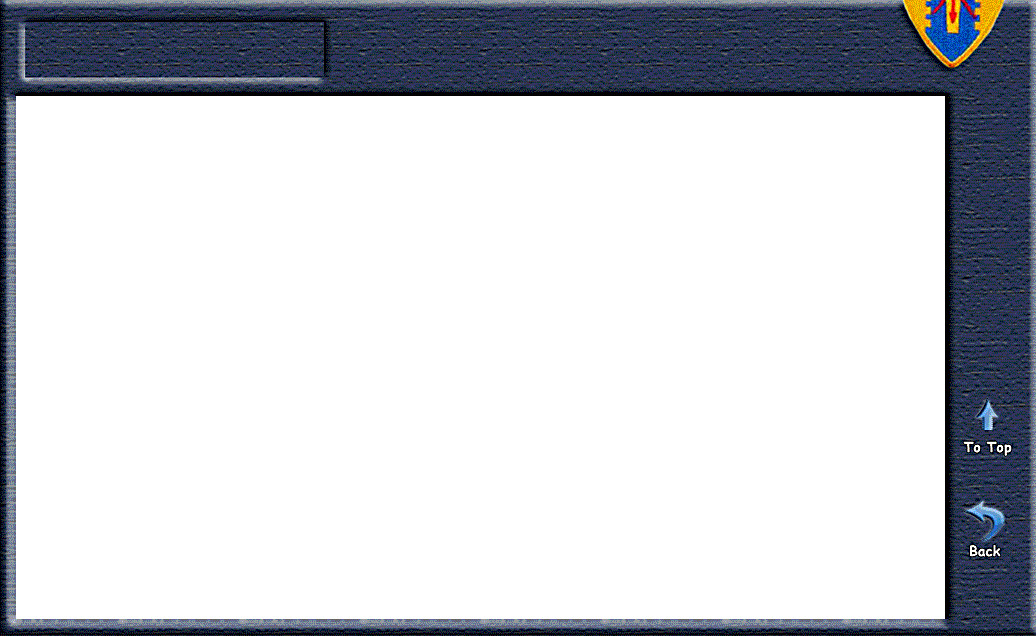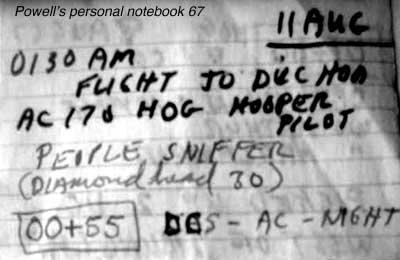

Larry Patterson, Bruce Powell, Pat Eastes, Wikipedia
……………………………………………………………………………………………………………………………………
Larry Patterson: We were provided with a "people sniffer" device that had a scoop mounted under the D-Model Huey and we would fly low-level and the device that was designed to detect human/animal smells and give us an audible signal.
On this particular day, I was flying the "people-sniffer" and one "Crazy Bruce" Powell was flying a Charlie-Model gunship that had just come out of Maintenance and he wanted to take it up to "check it out".
Our plan was for me to radio Bruce when the "people-sniffer" detected something and he would immediately release a set of 2.75" rockets on the spot.
WELL, apparently everything was not exactly lined up correctly because one rocket hit and exploded right outside the door of my ship!!!!! Not "behind" the ship!!!!
I immediately cancelled the mission due to the fact that I needed to return to change my pants!!!!
I don't remember ever seeing a "people-sniffer" again. - Larry
.........................................................................................................................
Bruce Powell: Using Centaur CSI (Combat Scene Investigation) techniques I discovered some things we can add to your note. One is a page from my handwritten Heavy Scout notebook, and then some stuff from Wikipedia.
I do remember talking to the techie who was hooking up that sniffer box in a slick (Probably John D. Baldeschwieler or one of his team). My job was to get his estimate of how fast the sniffer could react to the smell, then with the airspeed factor in the smoke drop by the gunner so we would have some idea of the spot to hit with rockets. I remember the airspeed being slow, maybe 60 knots max.
I immediately did not like the People Sniffer concept "Machine smells pee, then we shoot up area". Mostly because there was no way for us to accurately figure out where to shoot. Also because we didn't know whether it was people pee or animal pee. Big waste of time and ordinance.
We (25th Div) were part of the first implementation/testing of this gismo in 1967. My note shows a zero dark thirty flight with WO Hooper, covering Diamond Head 30 in the Duc Hoa area (probably the Horseshoe). The Horseshoe area was a bad ass area anyway. That is where CPT Eschenwald and I tested the friggin xeon lite thing. We felt that we could do better on these night flights in that area just looking for campfires or smoke.
I remember doing a couple of these in daylight over Hobo/Boli area. The Slick pilots flying low and slow didn't appreciate being a perfect target either. Maybe some of the slick crews will remember. - Bruce
Pat Eastes: Definitely one of the biggest waste of rockets, 7/62 ammo, and JP4 that we ever did.
Wikipedia and other interesting things found online:The detection method used by people sniffers depended on effluents unique to human beings; such as those found in urine and sweat. The technology was developed by General Electric for the Army's Chemical Corps. Sweat, being partially composed of ammonia, when combined with hydrochloric acid produces ammonium chloride….In 1967 the Army Scientific Advisory Panel sent John D. Baldeschwieler to Vietnam in order to conduct controlled experiments and determine the ability of the people sniffers to detect ammonia. The tests showed that the people sniffer responded randomly to ammonia indicators, making it a very subjective instrument. Despite this, the ability of the people sniffer to detect other effluents, such as smoke, helped it to remain a valuable tool during the Vietnam War.